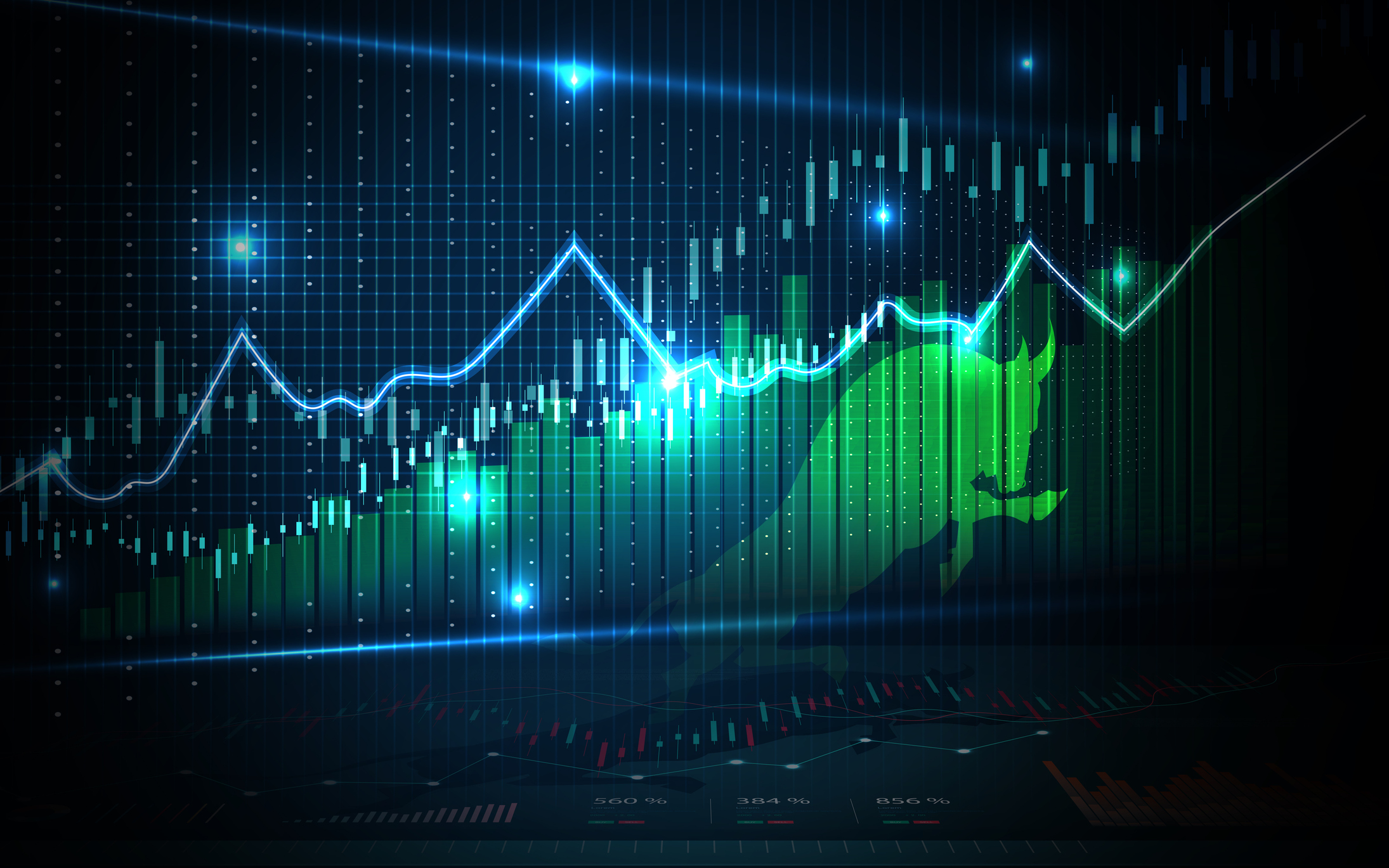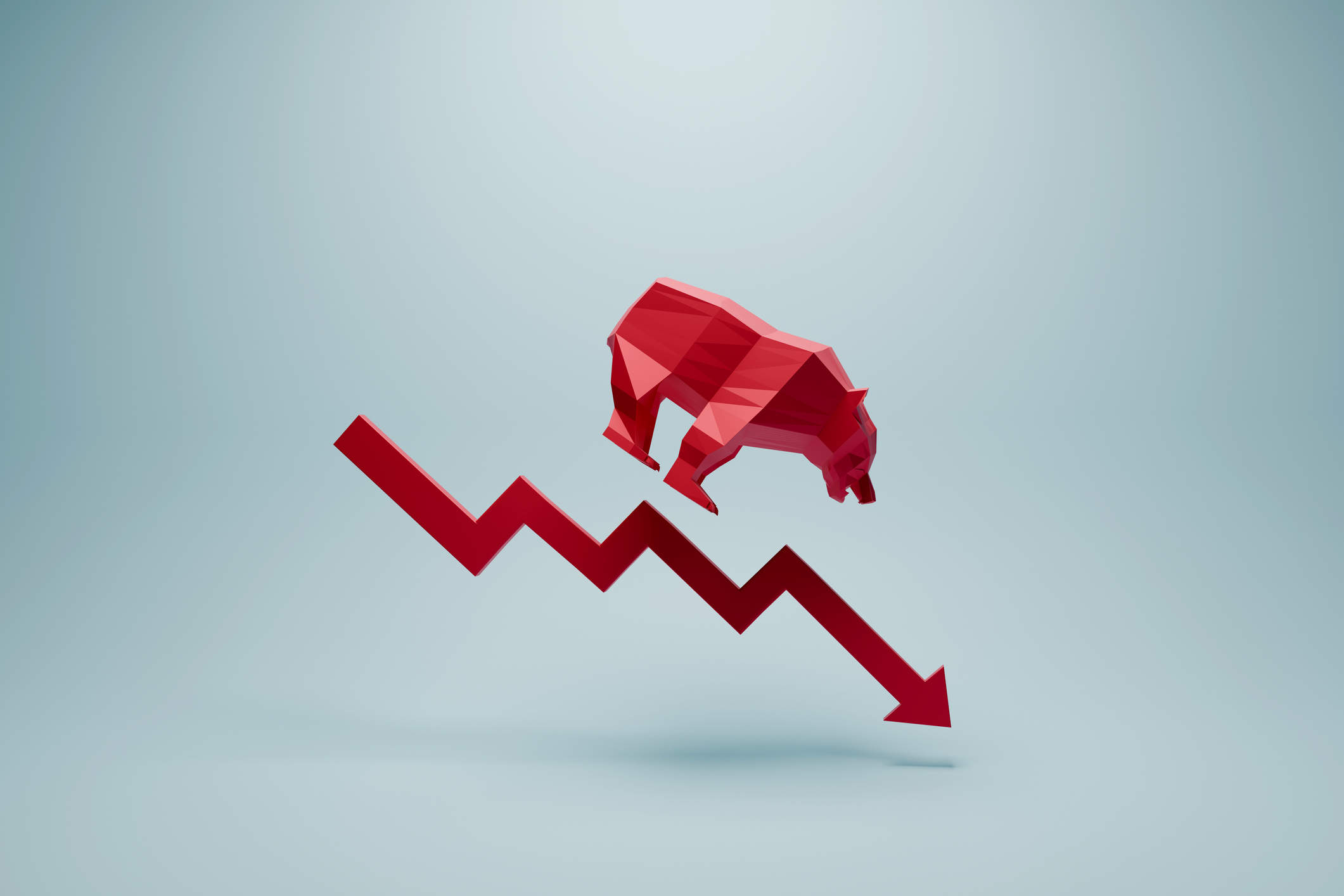Stock Market Today: Stocks Skid Into Another Risk-Off Turn
The promise of the AI revolution can't overcome flickering hopes for a "Fed put."



A modest winning streak ended at two after stocks opened lower on more disconcerting data and then basically trended with the leader of the AI revolution during another volatile session. With investors, traders and speculators interpreting mixed signals on economic growth, monetary policy and the potential for a "Fed put," nine of 11 S&P 500 sectors closed in the red.
The Cboe Volatility Index (VIX) was up the entire session, rising from 20.51 on Monday to as high as 22.57 on Tuesday, before settling at 21.83. Readings above 20 on the VIX indicate heightened volatility and increased uncertainty.
The whole world – or at least market participants – will be watching Federal Reserve Chair Jerome Powell at 2:30 pm Eastern Standard Time on Wednesday.

Sign up for Kiplinger’s Free E-Newsletters
Profit and prosper with the best of expert advice on investing, taxes, retirement, personal finance and more - straight to your e-mail.
Profit and prosper with the best of expert advice - straight to your e-mail.
According to the CME FedWatch tool, it's 99% certain the Fed will hold its benchmark federal funds rate target range at 4.25% to 4.50% at the conclusion of this week's FOMC meeting.
Odds for a rate cut at the next Fed meeting in May dropped from 85.6% as of February 18 to 61.6% as of March 11. Yesterday, the probability was back up to 77.7%, on its way to 80.5% on Tuesday.
Also in focus today was an early afternoon appearance from Nvidia (NVDA) CEO Jensen Huang. By the time Huang stepped up at 1 pm EST to deliver his keynote address at the GTC AI Conference, NVDA had fallen as much as 4.2% and then risen 3.2%.
At the closing bell, the Dow Jones Industrial Average was down 0.6% at 41,581, the S&P 500 declined by 1.1% to 5,614, and the Nasdaq Composite had shed 1.7% to 17,504.
What did Jensen say?
NVDA stock peaked at $118.98 about 15 minutes into Huang's address, sold off over the next hour, and sagged to its session lows before closing down 3.4% at $115.43.
The CEO said Nvidia's partners will release Blackwell Ultra products during the second half of the calendar year, including the Nvidia GB300 NVL72 AI server and the NVIDIA HGX B300 NVL16 system.
According to the chipmaker, the GB300 NVL72 server offers 1.5 times the AI performance vs the GB200 NVL72.
Nvidia has also established a partnership with General Motors (GM) to develop next-generation self-driving vehicles, robotics and factories using AI. And, in a press release, it introduced Dynamo, a new inference engine.
During his address, Huang reported that Nvidia has sold 3.6 million Blackwell GPUs so far this year to Amazon.com (AMZN), Microsoft (MSFT), Google parent Alphabet (GOOGL) and International Business Machines (IBM).
The CEO said the AI data-center buildout has reached an inflection point, noting that Nvidia sold 1.3 million Hopper GPUs during its peak year in 2024.
NVDA is now down 12.1% since it reported fiscal 2025 fourth-quarter results on February 26.
What will Jerome say?
Everybody wants to know what Fed Chair Powell thinks about tariffs and trade wars. Odds are Powell will say a lot and also very little while framing these issues in terms of the Fed's dual mandate: steady prices and full employment.
One big question that may be a little less fraught for investors, traders, speculators and other observers is the future of quantitative tightening (QT). One big throughline is all the uncertainty.
Minutes from the January FOMC meeting show that multiple policymakers said they favored tapering or pausing QT due to increased uncertainty that threatens the central bank's control of the federal funds rate.
In February, Cleveland Fed President Beth Hammack said her "baseline preference" is to maintain QT while fiscal policymakers negotiate federal spending and the debt ceiling.
UBS analyst Sonia Meskin expects the Fed to "push off" the decision whether to taper QT until May or June.
According to Meskin, "a full stop to QT may need to wait until the May meeting to minimize any market confusion at the time of announcement."
The analyst explains that "stopping QT altogether would likely be seen as a significant shift," noting that "the Fed would look to prepare the market for this at later meetings."
Note that we're tracking news and analysis ahead of the FOMC meeting on our live Fed blog. We'll also track Chair Powell's press conference.
Incoming data
The Import Price Index is not one of those items market-watchers highlight on a regular basis. Things have changed in the present era.
The Bureau of Labor Statistics said import prices rose 0.4% in February, above consensus expectations.
According to Andrew Brenner, head of international fixed income at National Alliance Securities, "Equities did not like the fact that import prices are causing PCE estimates to be raised."
"PCE" refers to the Personal Consumption Expenditures Index, the Fed's preferred measure of inflation. Rising PCE "makes it even tougher for the 'Fed put' to kick in," says Brenner.
The "Fed put" is the well-tested idea that the Fed will cut interest rates to sustain economic growth. That's good for stocks. But higher inflation would mean the Fed will maintain its holding pattern.
Meanwhile, the Census Bureau said housing starts increased by 11.2% in February to a seasonally adjusted annual rate of 1.5 million and exceeded a consensus estimate of 1.39 million.
Building permits declined by 1.2% compared to January to approximately 1.46 million but exceeded a consensus estimate of 1.45 million.
The Federal Reserve Board reported that industrial production and manufacturing production both increased by more than expected in February.
Industrial production increased by 0.7% vs a 0.3% consensus estimate. Manufacturing, which accounts for about three-quarters of production, was up 0.9% in February, accelerating from 0.1% in January.
January industrial production growth was revised down, while manufacturing production was higher than initially forecast during the first month of the year.
Related content
- The 25 Biggest U.S. IPOs of All Time
- Best Bond ETFs to Buy Now
- What Does a Government Shutdown Mean for Stocks?
Get Kiplinger Today newsletter — free
Profit and prosper with the best of Kiplinger's advice on investing, taxes, retirement, personal finance and much more. Delivered daily. Enter your email in the box and click Sign Me Up.

David Dittman is the former managing editor and chief investment strategist of Utility Forecaster, which was named one of "10 investment newsletters to read besides Buffett's" in 2015. A graduate of the University of California, San Diego, and the Villanova University School of Law, and a former stockbroker, David has been working in financial media for more than 20 years.
-
 6 Stunning Waterfront Homes for Sale Around the US
6 Stunning Waterfront Homes for Sale Around the USFrom private peninsulas to lakes, bayous and beyond, Kiplinger's "Listed" series brings you another selection of dream homes for sale on the waterfront.
By Charlotte Gorbold Published
-
 Six Reasons to Disinherit Someone and How to Do It
Six Reasons to Disinherit Someone and How to Do ItWhether you're navigating a second marriage, dealing with an estranged relative or leaving your assets to charity, there are reasons to disinherit someone. Here's how.
By Donna LeValley Published
-
 Should You Still Wait Until 70 to Claim Social Security?
Should You Still Wait Until 70 to Claim Social Security?Delaying Social Security until age 70 will increase your benefits. But with shortages ahead, and talk of cuts, is there a case for claiming sooner?
By Evan T. Beach, CFP®, AWMA® Published
-
 Retirement Planning for Couples: How to Plan to Be So Happy Together
Retirement Planning for Couples: How to Plan to Be So Happy TogetherPlanning for retirement as a couple is a team sport that takes open communication, thoughtful planning and a solid financial strategy.
By Andrew Rosen, CFP®, CEP Published
-
 Market Turmoil: What History Tells Us About Current Volatility
Market Turmoil: What History Tells Us About Current VolatilityThis up-and-down uncertainty is nerve-racking, but a look back at previous downturns shows that the markets are resilient. Here's how to ride out the turmoil.
By Michael Aloi, CFP® Published
-
 Stock Market Today: Stocks Surge to Close a Volatile Week
Stock Market Today: Stocks Surge to Close a Volatile WeekIt was another day with a week's worth of both news and price action, but it ended on a strongly positive note.
By David Dittman Published
-
 Home Insurance: How to Cut Costs Without Losing Coverage
Home Insurance: How to Cut Costs Without Losing CoverageNatural disasters are causing home insurance premiums to soar, but don't risk dropping your coverage completely when there are ways to keep costs down.
By Jared Elson, Investment Adviser Published
-
 Markets Roller Coaster: Resist the Urge to Make Big Changes
Markets Roller Coaster: Resist the Urge to Make Big ChangesYou could do more harm than good if you react emotionally to volatility. Instead, consider tax-loss harvesting, Roth conversions and how to plan for next time.
By Frank J. Legan Published
-
 Why Homeowners Insurance Has Gotten So Very Expensive
Why Homeowners Insurance Has Gotten So Very ExpensiveThe home insurance industry is seeing more frequent and bigger claims because of weather, wildfires and other natural disasters.
By Karl Susman, CPCU, LUTCF, CIC, CSFP, CFS, CPIA, AAI-M, PLCS Published
-
 Stock Market Today: Uncertainty Proliferates: Dow Loses 1,014 Points
Stock Market Today: Uncertainty Proliferates: Dow Loses 1,014 PointsWeaker-than-expected consumer inflation data wasn't enough to stabilize sentiment during another volatile day for financial markets.
By David Dittman Published